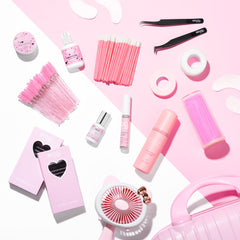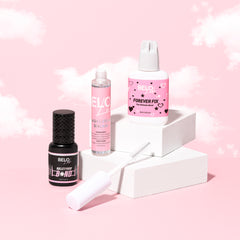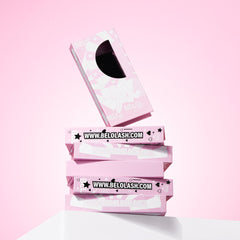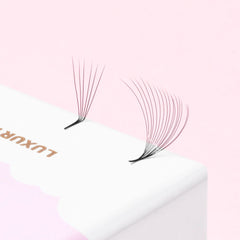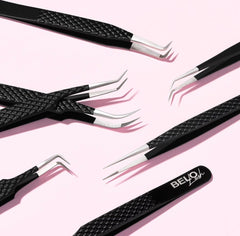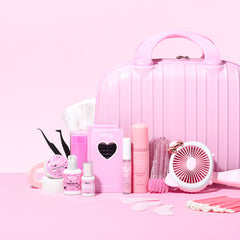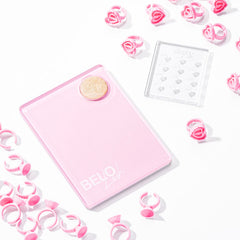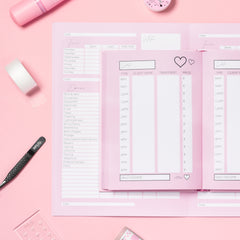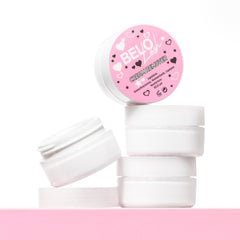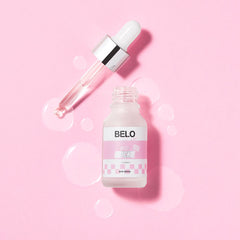When lash shedding season rolls around, it takes many people by surprise. You may have noticed at certain points in the year that your lashes are starting to fall out, more so than normal. This might at first raise a couple alarm bells, especially if they are not familiar with basic human biology or the hair loss cycles that humans go through. They may misconstrue the signs and think they have health issues. But, this is definitely not the case. They are just in lash-shedding season!
An easy comparison is found in the animal kingdom. If you have pets, you will know that your puppy or kitty goes through a seasonal shedding cycle. They lose their warmer coats in spring, which gives way to a fresh and cooler coat.
Simply put, human body hair also goes through a shedding cycle and a growth cycle. These cycles even apply to natural eyelashes! If your client is stressed about lash shedding, then just offer them a cuppa and reassure them that it's completely normal! Let's explore the natural lash-shedding cycle, so you can help your clients understand their lash loss.
What Is Lash Shedding Season?
Lash shedding season is a completely natural process that everyone experiences. Seasonal lash shedding generally occurs during the spring and fall due to changes in temperature. Thus, seasonal lash fallout is to be expected. Most people lose between one and five lashes every day, but during seasonal lash shedding, they may lose more.
But what if the lash-shedding season is over and the natural lashes are still dropping? Don't worry! Natural lashes have a lash growth cycle.
The initial growth phase (anagen phase) is when the hair follicle starts to grow. At first, the growth was barely visible. This phase lasts between 30 and 45 days (four and six weeks). The resting phase (telogen phase) is typically between 100 and 150 days (three to five months). Then, the natural lashes fall out and are replaced by new natural eyelashes.
Factors Influencing Lash Shedding
There are factors other than seasonal lash shedding that can affect how many lashes are lost or when they are lost. These factors can influence the natural lash cycle as well as lash growth. Let's consider some of these so you are prepared to help your clients' lashes remain healthy and full throughout the year.
Hormonal Changes
If it isn't eyelash-shedding season, your client should consider if their lashes may be affected by hormonal fluctuations. Is your client pregnant or going through menopause? Are they on birth control pills or hormone therapy? These factors can all affect how our eyelashes grow.
In fact, it's interesting to note that some hormonal medications can either increase or decrease hair loss. These medications could cause severe hair loss. However, your client could also be experiencing more hair growth than normal, leading to more lashes.
Age
Age affects everyone. The older a person gets, the more disrupted the seasonal lash shedding can be. If the lash growth cycle slows down, shedding may be more prominent. This is a good time for you to encourage your clients to consider eyelash extensions.
By having lash extensions, your clients can look younger and rejuvenated, which will make them feel more confident. Do take a moment with your clients and tactfully reassure them that the loss of lashes is completely natural. They will appreciate the comfort.
External Influences
As a rule, everyone should steer clear of any harsh makeup removers, as they can cause immense damage to your eyelashes. Even something like excessive rubbing can be harmful to lashes. The vigorous use of eyelash curlers is another factor that weakens and damages your lashes, accelerating shedding. Always use soft, gentle strokes when dealing with your lashes.
Lash Shedding and Your Clients' Extensions
If your client is experiencing lash shedding, they may notice their lash extensions looking a little shabby or uneven. This is not only disconcerting for your client but for you as well! If this is the case, it's best for your client to move up their refill appointments, limiting the amount of time between sessions. This ensures that they're always looking their best!
To compensate for the fallen lash hairs, lash artists may use special techniques to increase lash volume. Hybrid lashes and volume lashes are great to compensate for the blank spaces as they help to fill the gaps created by lash shedding.
It is up to the lash techs to educate their clients and help them understand how lash-shedding season can affect them and the appearance of their lash extensions. It's all about managing your client's expectations. You can explain that some variation in lash appearance is normal, and while eyelash extensions can help lessen the appearance of shedding, they are not permanent.
Managing Lash Shedding - Tips For Your Clients
Practise Proper Lash Hygiene
Proper lash hygiene is essential. Lash extensions should be cleansed daily using an oil-free cleanser to prevent makeup and debris from accumulating on them. When cleaning lashes, make sure it is done gently and thoroughly to avoid impurities causing unnecessary harm.
It is important to note that dirt and impurities can not only cause lashes to fall out faster but also cause infections. It is best to maintain good hygiene and administer proper lash care.
Avoid Excessive Manipulation
While seasonal lash shedding is natural, a lash artist should always gently handle applications and removals of eyelash extensions. If lash extensions are handled roughly, this could affect the natural lashes and make the lashes shed prematurely. It can also loosen the lash adhesive, causing the lash extensions to fall out.
When working with lashes, be extra careful around the lash line to avoid interrupting further growth during the growth phase. You need the natural lashes to be strong so that the lash extensions can be securely attached. Improper care, harsh treatment, harsh chemicals and extreme heat can all contribute to lash shedding.
Attend A Refill Session
If your client is really worried about their lash loss, even after adhering to their post-treatment care, you can encourage them to schedule an appointment for touch-ups. It is generally better to take extra good care of lashes during lash shedding season, so a refill will just make your client feel even better about their appearance.
Regular refill sessions may help keep the lashes looking more consistent and will get them looking luscious once again.
Conclusion
Lash shedding is totally normal, especially when it comes to a seasonal lash shed. So you and your clients have nothing to worry about. While lash-shedding season will have an effect on your client's lash extensions, as long as you have the knowledge to deal with it, you can make your clients (and their lashes) look great!
To ensure that you are well-prepared for seasonal shedding, check out BELO Lash's products and training sessions. This will help you hone your knowledge of lash-shedding season and eyelash extensions. Contact BELO Lash to find out more information on everything lash!


